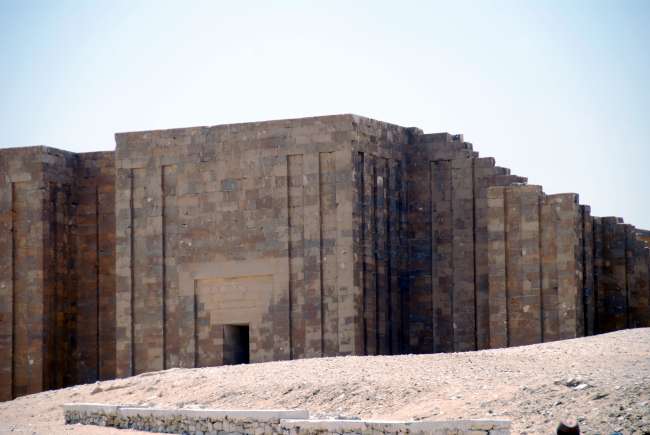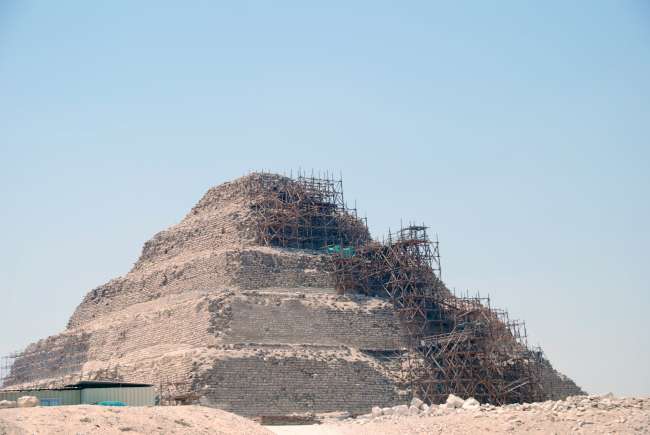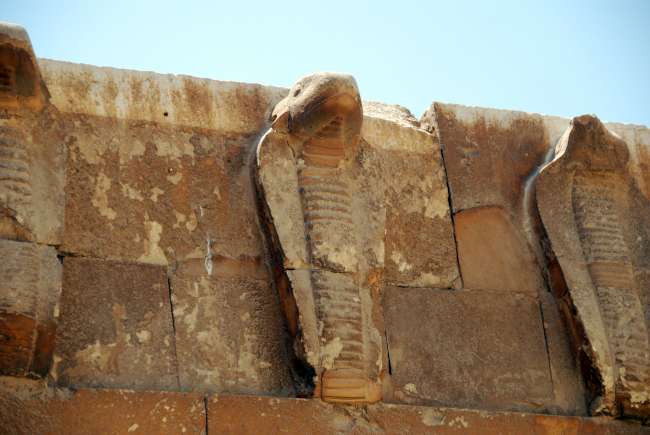
World Monument Photography
July 27, 2024
The Pyramids of Giza is perennially flocking with tourist to witness in person the towering pyramids that have been built thousands of years ago. The great engineering achievement of constructing the pyramids did not happen overnight. It has its roots to another site that was considered sacred ground by Egyptians for thousands of years. Near the ancient city of Memphis lies an elevated strip of land measuring 7 kilometers by 1.5km with perhaps the highest concentration of burial chambers and tombs throughout Egypt. This area is today known as Saqqara and lies around 20 km south of the Pyramids of Giza. The masterpiece of Saqqara is Djoser`s Funerary Complex with the Step Pyramid at its center.

As one enters Djoser`s Funerary Complex, the first thing that one notices is a flat rectangular tall (10.5 meters in height) sand colored structure with no decorative markings. This is the entrance to the Funerary Complex, the Enclosure Wall as it is called. It entrance leads to a narrow hallway with two rows of high columns supporting the roof. This is the earliest form of a colonnade to be built in history. The hallway, which spans a distance of 54 meters is decked with statues on either side that would greet visitors. At the end of the hallway you are greeted with souvenir vendors as you enter the courtyard of the Step Pyramid.
As one exits the hallway, you are faced with a large courtyard. At the end of the courtyard is a towering six step pyramid, each step measuring more than 10 meters high. This is humanity`s first attempt at constructing a stone monument from regular pieces of stone, completed more than 4,600 years ago. The Step Pyramid itself is a living example of the evolution of tomb building in Egypt. It was built over a period of 20 years, evolving over time to what we see today. It started out as a single level mastaba. A mastaba, literally meaning “house for eternity”, was a burial chamber built by the Ancient Egyptians that was meant to house the tomb along with important relics and riches necessary for the afterlife. This was the first mastaba built of stone. The mastaba was later expanded and a second level was added. The second level was made smaller than the first for structural stability. Later on, the mastaba was expanded once more and four levels were eventually added. This resulted in the six-steps that the Step Pyramid now exhibits. The Step Pyramid measures 63 meters in height, and the entire complex measures 544 by 277 meters.
Djoser`s tomb itself is 28m deep below ground level. There are several chambers that could be entered by staircases and ramps that lead to chambers depicting the afterlife. Some of these chambers appear to have colorful blue mosaic to depict the afterlife, as imagined by the Ancient Egyptians of the third dynasty.

The most mysterious section of the complex is the South Tomb. It contains a miniature tomb, too small for any human use. Its purpose is a subject of great debate and academic investigation. Some believe that it one day housed the King`s Ka statue. Others believe that it was here that the crown of Upper and Lower Egypt were kept. Above ground, over the tomb, is a walk way that exits the south side of the complex. This walk way is thought to have been part of a cult chapel built during the New Kingdom, depicting frieze with cobras on top of the chapel.
Continuing along the hallway of the frieze of cobras, a stairwell will lead you down to the Serapeum. The Serapeum is a group of underground buildings that were most probably built much later during the New Kingdom. Some of the tombs contain sacred Apis bulls, which was a common practice in the New Kingdom. The Serapeum contains tombs from the time of Amenhotep III to the Ptolemaic Period.
An interesting section of the complex, to the east of the Step Pyramid is the Serdab. Serdab is an Arabic word that literally means cellar. There are two holes that allow you to see the inside of the cellar. If one looks through these two holes you will see a life size statue of King Djoser looking at you to observe the rituals and offerings that were made in his honor … for eternity. The statue you are looking at, however, is a replica. The original statue, discovered in 1925, was carved out of a single piece of limestone and it is securely held in the Cairo Museum. It is the oldest life-sized Egyptian statue that has been discovered thus far.

King Djoser ruled Egypt from 2691 to 2625 BC. He is the most famous king of the third dynasty. He is credited for expanding the kingdom by conquering the Sinai peninsula and subduing the local tribes there. He setup large mining facilities that helped provide raw materials for his building projects. This was his second major achievement. He commissioned his trusted advisor and vizier, Imhotep, to architect the structure which is now known as the Step Pyramid. King Djoser also commissioned several other building projects throughout his kingdom.
Saqqara continued to be used as burial ground for Egyptians for thousands of years. It contains the tombs of the monarchs of the first dynasty (~3000 BC) up to the Christian era (540 AD). This created a very high density of tombs in the area. Indeed, many burial sites have been reused several times. It contains several original architectural elements such as the oldest pyramid structure in the world, the first colonnade structure in the world, and the oldest known dressed stone building in the world. Even the idea stone carving, as found in the Step Pyramid, was an invention of Imhotep, the architect of the Step Pyramid. It is no wonder that in 1979, the entire Saqqara region was marked as a World Heritage Site by UNESCO. A journey to Djoser`s Funerary Complex is truly a journey to the beginnings of civilization.